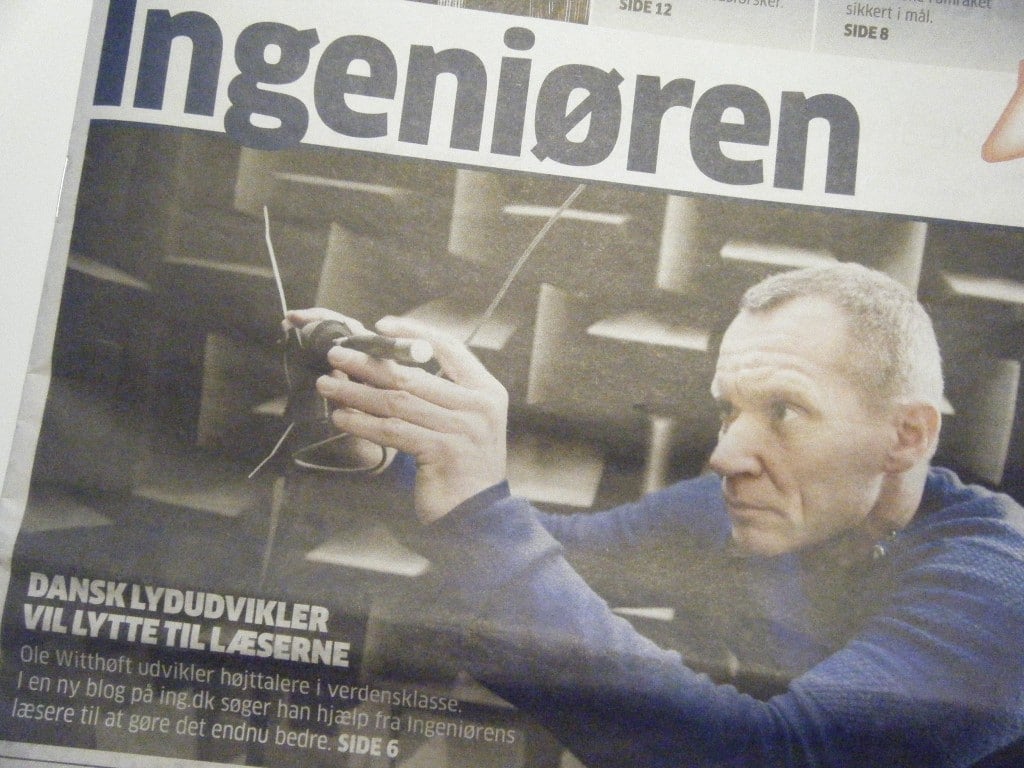Help develop a world-class speaker
Here on the blog we will develop a speaker together. Not just any speaker - but a small, world-class Hi-Fi speaker. The goal is set high and the ambition is to set a new standard for sound quality in small speakers.
You'll gain insight into the wondrous world of sound and technology, and the opportunity to actively participate in the process.
The big arm movements aren't something I've done out of the blue, because I've done it before. Since 1984 I have been behind the development and design of about 120 different quality loudspeakers and one of them is a small loudspeaker called SA2K, which got a great international recognition when it was in production in the early 00s.
Now it's time to take up the fight again, because just like in the world of sport, there's always something nagging at the back of your mind. The urge to do even better.
So far there is only one idea with the working title Speaker Q113. It's called that because the finished prototype should be ready in Q1, 2013.
Why a small HiFi speaker?
When a speaker developer really wants to show his skills, he (or she) takes on the laws of physics and develops his idea of a good little speaker. The one that everyone can fit in and with great sound that everyone can enjoy.
It's not hard to create a speaker that's just small. What is difficult is to create a speaker that is both small and really good. A small speaker doesn't have the volume to help the good sound along, so the task is almost impossible, which is precisely why it's exciting to take up the challenge.
The tradition is that the speaker size should have an internal volume of 5-10 litres, it should be two-way (i.e. with bass and treble), and the woofer should have a diameter of close to 13 cm.
Since 1974, when British Rogers created the first iconic small quality speaker for the BBC, many have followed suit with their offer of a similar speaker in roughly the same size.
We need to create a Hi-Fi speaker that is connected to a traditional music system in good quality. Not something with built-in amplifiers and other aids. A kind of "back to basics", where today's performance can be directly compared to the past.
Development process
The development of a loudspeaker can roughly be divided into two halves: scientific and artistic.
The loudspeaker is a technical device and there are a lot of acoustic, electrical and mechanical factors we can measure, simulate, compare, change and improve.
The scientific part we need to have an overview of first, because we need to know exactly what we are doing. That's the first discipline.
Then comes the artistic half, which is about the sound of the speaker.
Even a speaker at a "technically perfect level" can be made in many ways. Some of them don't sound very good, others much better.
Therefore, listening, testing, adjusting and evaluating are needed. An area in which everyone can participate.
The point is that measuring instruments are not perfect. We can't measure and calculate everything we can hear. So the first half of the project is to find the best solutions, technically speaking. The second half is to tame the technique and make it sound like music.
Lively and poignant. Along the way, I'll take you to visit some of the world's leading suppliers to the speaker industry. They are Danish, so I don't have to travel very far.
The plan is to complete the scientific part before the summer holidays and then take a well-deserved summer break.

